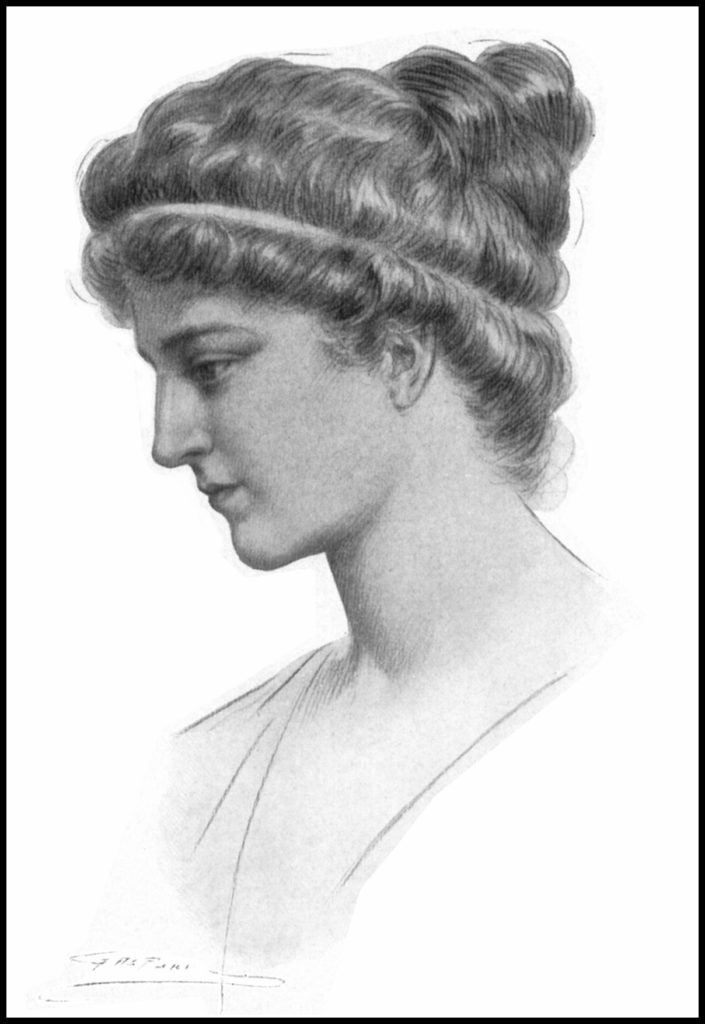by The History Chicks | Apr 7, 2014 | Biography Episode, Episode, Podcasts
We continue our series on ancient Egypt by traveling ahead in time over 1400 years from Hatshepsut for a chat about Ancient Egypt’s last great ruler, the Queen of Kings -Cleopatra VII.
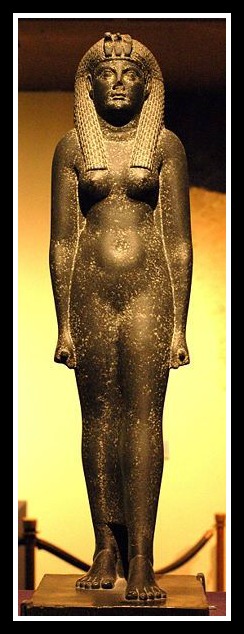
Cleopatra, Queen of Egypt (courtesy Museum Syndicate)
Between the two rulers there was not only a great deal of time, but a great deal of change. By the time Cleopatra is born, Egypt is no longer ruled by Egyptians but instead by Macedonian Greeks, who were put in place during Alexander the Great’s land grab about 300 years prior.
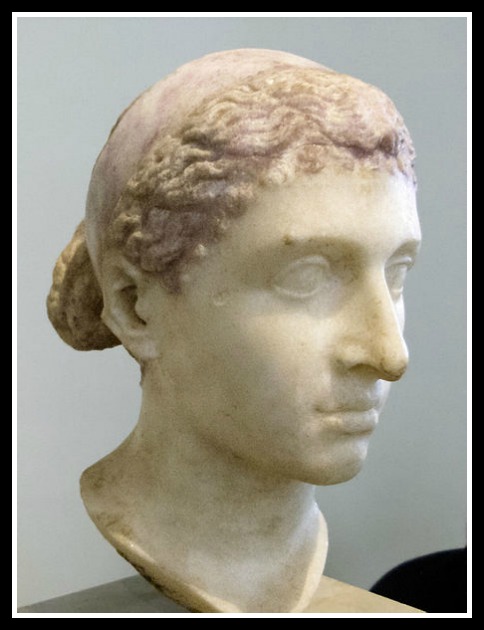
Bust of Cleopatra VII, Altes Museum, Berlin
The family that Cleopatra was born into is, by modern standards, pretty dysfunctional. But not by their standards, and really isn’t that what’s important? We cover the whys and hows during the podcast but it was common for brothers and sisters to marry and for all of them to play a life or death game of Survivor to determine who the would next sit on the throne. (Do not play Musical Chairs with a Ptolemy)
But before Cleopatra would have all her story arcs, challenges, schemes and victories, she was a little princess. Born Cleopatra VII Philopator, the third child to father Ptolemy XII Auletes and mother, his Great Wife (also most likely his sister or half sister) Cleopatra Tryphaena V. She was raised and educated by tutors in Alexandria and learned to read and write in Greek. She learned art, philosophy, science and drama, and proved herself forward thinking by learning nine languages including one that the rest of her family didn’t know: Egyptian.
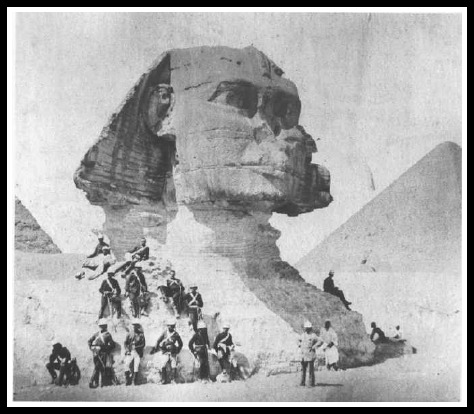
Egyptian Itty Bitty Kitty- the Great Sphinx was almost 2500 years old when Cleopatra was born.
Of course we go into what we know of her childhood and the scheming by family members to take over rule from her father. He officially named Cleopatra and her husband/brother Ptolemy VIII as co-rulers upon his death. When she took the throne, Cleopatra was 18 and the Egypt that the pair inherited is a bit of a mess. Famine and the pesky Roman Empire breathing down Egypt’s neck didn’t make the future look all that bright. A clever smear campaign by her brother’s advisers and soon Cleopatra was forced to hit the road, hang out in Syria, and wait for the right moment to strike.
But the same men who who drove her out of Alexandria made a misstep with Julius Caesar who had arrived in town. Cleopatra took a moment of faux pas confusion to come back to Alexandria, sneak into the palace to see Caesar (legend says rolled up in a rug and unfurled at his feet, but it might have been an unromantic burlap sack)…and the rest really is history. Cleo and Jules errr… combine assets, shall we say? As always, we go into greater detail in the podcast, but her co-ruler/brother/husband P13-died fleeing Alexandria, she is reinstated to the throne, has to marry another younger brother…and within a year she gave birth to Ptolemy Caesar known as Caesarion- Julius Caesar’s son.
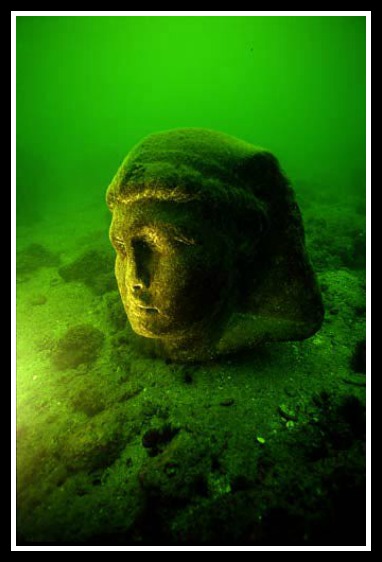
Granite head believed to be Caesarion
Caesar headed back to Rome and was handed a sweet dictatorship for all his victories. Cleopatra decided to visit him and bring their son along to try and get him named Caesar’s heir. The trip wasn’t entirely successful (Understatement City): There is a bit of embarrassment involving Cleopatra’s remaining sister, Arsinoe, as well as quite a bit of of gossip and rumors about Cleopatra and Caesar. And then this happened.
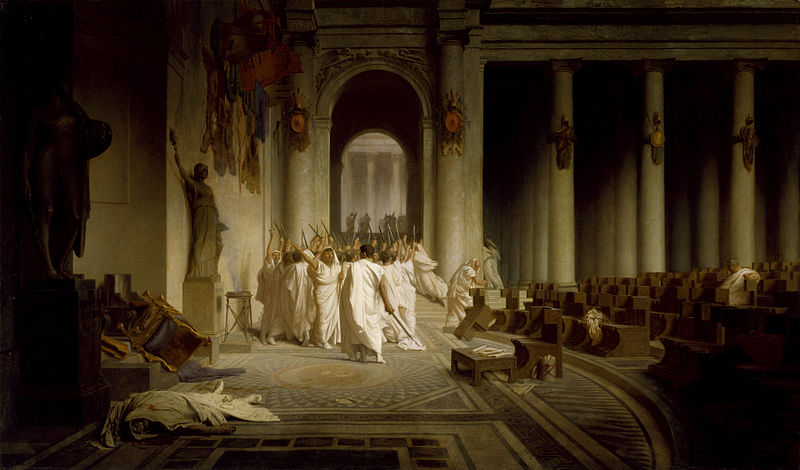
Et tu, Brute? Death of Julius Caesar by Jean-Leon Gerome
Caesar had named his nephew, Octavian his successor.
Dangit.
Cleopatra is about 28 and her husband/brother is still co-ruling but she would prefer that her son sit next to her, so…in family tradition-boom. Done. Cleopatra wants what Cleopatra wants, right? Right. The woman made things happen, got to give that to her. But she also needs an ally in Rome. Enter womanizing, party boy with an ambitious streak and some serious battle cred- Marc Antony. This is the relationship for the ages! How did Cleopatra catch the eye of this man? Was it her famous looks? Probably not. Eh? While scholars don’t know exactly what Cleopatra looked like, we all know, right?
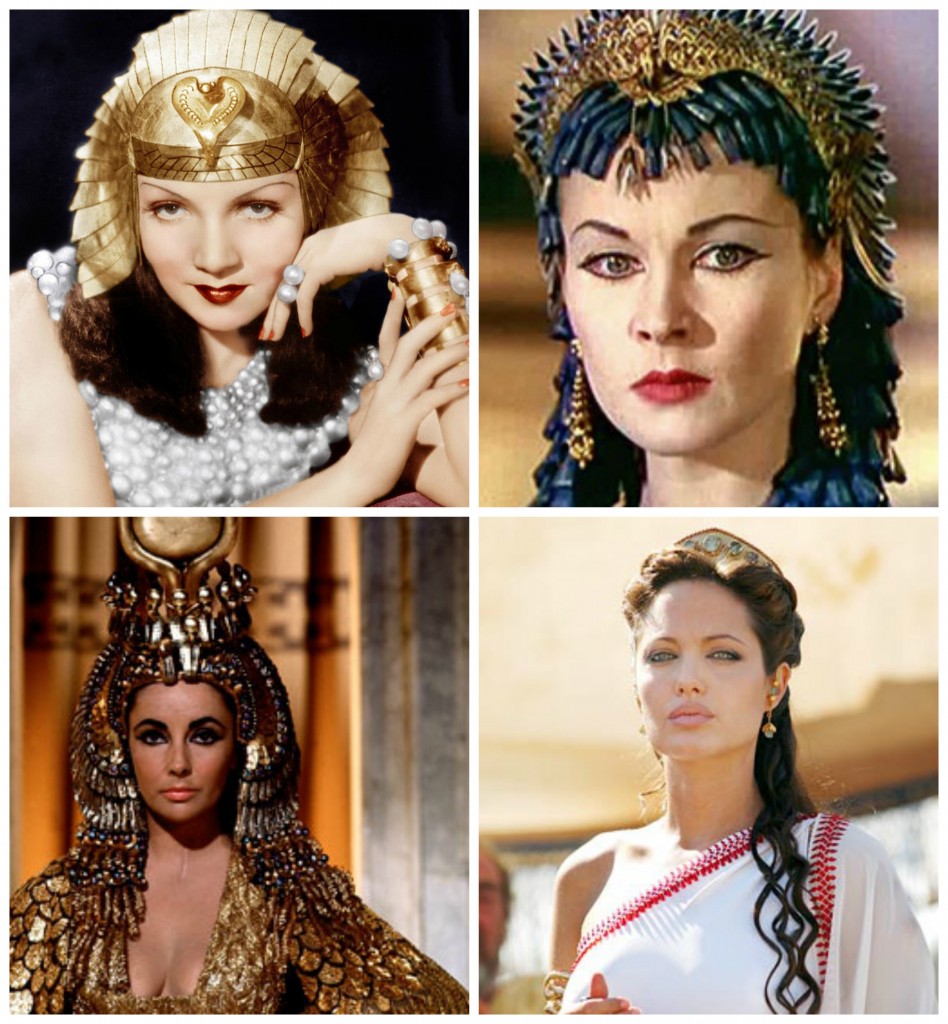
Faces of Cleopatra? Claudette Colbert, Vivian Leigh, Liz Taylor and Angelina Jolie (movie in production)
Um, no. Here she is on one of her coins.
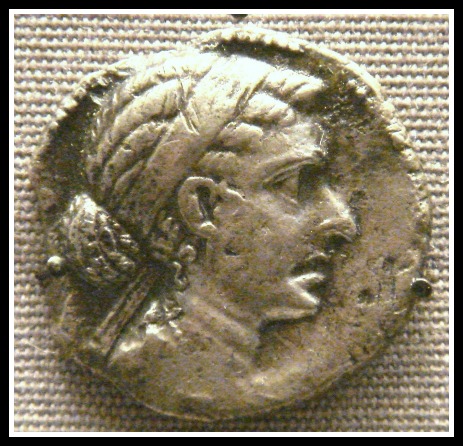
Cleopatra coin
But she was smart, confident, politically savvy, cunning and charming – those qualities add up to one beautiful, powerful and compelling woman. While her ability to finance them certainly didn’t hurt her chances she most likely won both Julius Caesar and Marc Antony over with her brains, confidence and personality… as all women should .
Yes, we say that.
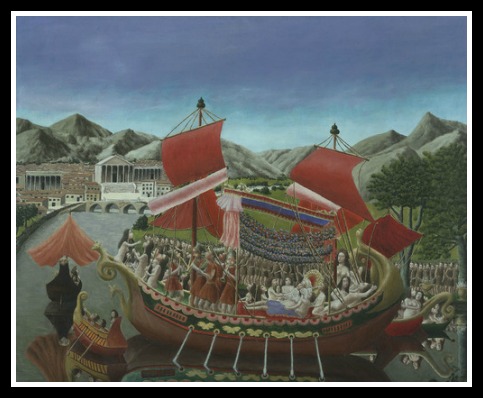
She had a flair for the flashy that might have helped to catch her men’s eyes. Cleopatra’s Barge, by Andre Bauchant
She did also play to Antony’s weaknesses- women, money and bawdy behavior. For quite awhile the pair played house (and by house, we mean palace) in Alexandria. But he had to head back to Rome at some point, his (soon to be deceased) wife had made a bit of a war mess on his behalf and -long story short- he was politically forced into marriage with Octavian’s, sister…right about the time that Cleopatra is giving birth to his twins, Cleopatra Selena II and Alexander Helios.
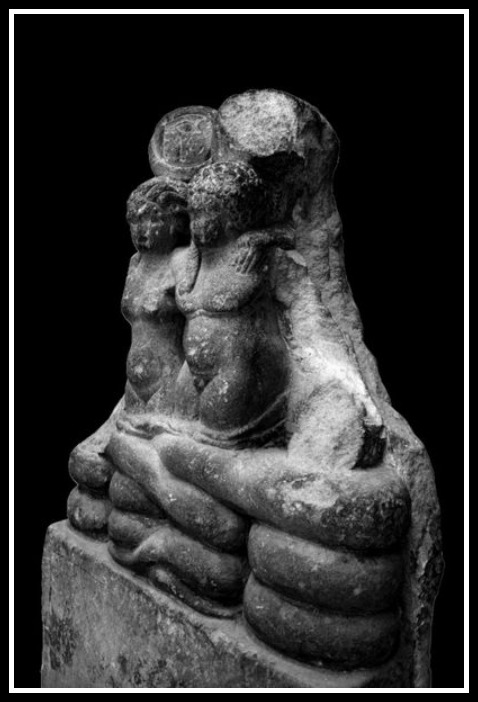
Statue of Cleopatra’s twins
There would be one more child, several power struggles and some raised eybrows when Marc Antony left his wife for Cleopatra and handed territory to his children and Cleopatra more power which leads to a very happy Egypt. But things turned for our super couple and the end game was launched by frienemy, Octavian: the Battle of Actium where Antony and Cleopatra are overcome by Octavian’s forces.
Octavian is reported to tell Cleopatra that maybe they can do business if she takes care of Antony and gets him out of the picture. She can’t do it. Instead she sends word to him that she has died (or maybe she did no such thing…ahh, the joys of looking back through time) – and he does it himself. However it happened, the result is the same-the man threw himself on his sword!
Cleopatra, knowing that she will die at the hand of Octavian, become his prisoner or have to watch her children die- kills herself. The snake, right? Maybe not. Some evidence suggests hemlock and opium but that result was the same as Marc Antony’s: at the age of 39 Cleopatra died and ended the reign of the Pharaohs.
Rome took over rule of Egypt after her death and a lot of her statues were destroyed. Antony’s former wife, Octavia, raised the twins and Ptolemy Philadelphus; Caesarion is murdered by Octavian. Octavian becomes Rome’s first Emperor and changes his name to Caesar Augustus I. Cleopatra’s tomb and mummy has not been found.
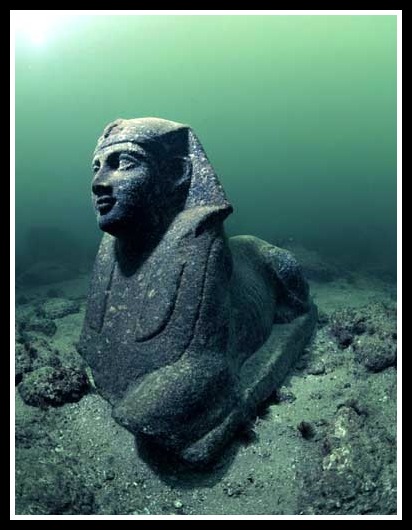
The remains of Cleopatra’s kingdom have been discovered off the coast of Alexandria.
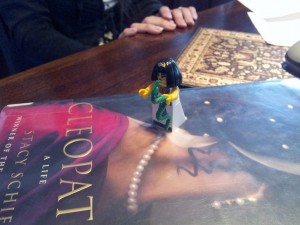
Because…Legos rule.
Time Travel With The History Chicks
We’ve combined the media for both Hatshepsut and Cleopatra into one list: You know we love a good online museum trip and you can get your click on looking at the Hatshepsut collection at the Metropolitan Museum of Art.
Hatshepsut’s temple, Djeser-Djeseru, is still standing and open for visits. Click the link for descriptions, photos and maps of the layout of this surprisingly contemporary looking architecture.
This National Geographic site is about a traveling exhibit and full of intel (including one of the books that we recommended), Cleopatra: The Search for the Last Queen of Egypt
As far as movies go, the biggies you certainly know about- Claudette Colbert, Vivian Leigh and of course, Liz Taylor. But how about this version on YouTube with Billy Zane and Timothy Dalton?
Books!
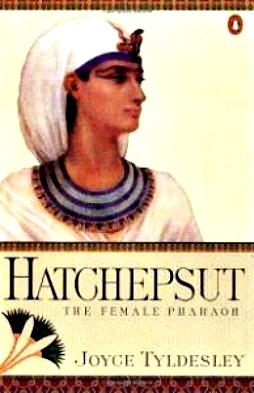
Hatshepsut: The Female Pharaoh by Joyce Tyldesley
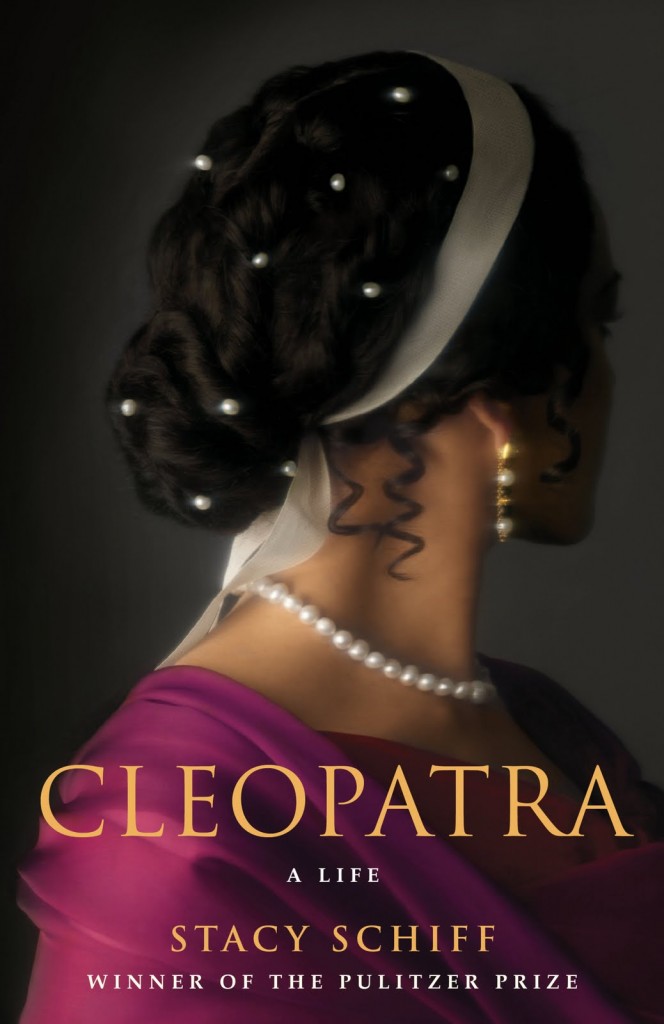
Cleopatra: A Life by Stacy Schiff (This is the one that the upcoming movie with Angelina Jolie is based on)
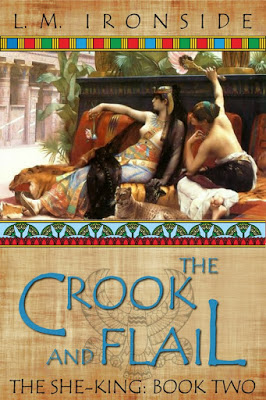
The Crook and Flail by LM Ironside
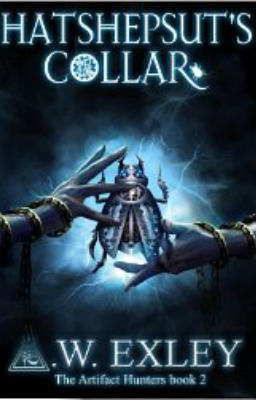
The Artifact Hunters Series
For the young set:
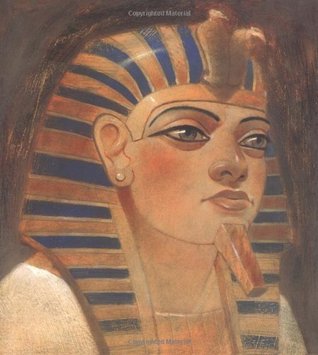
His Majesty Herself, by Catherine Adronik
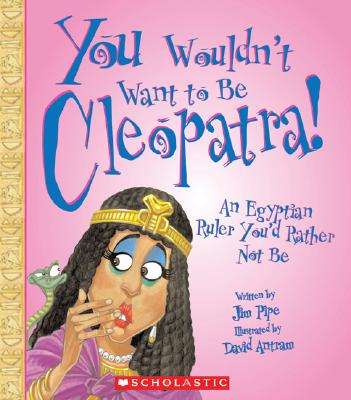
You Wouldn’t Want to be Cleopatra by Jim Pipe
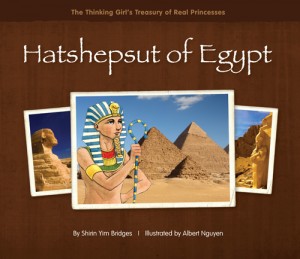
Excellent series- The Thinking Girls Treasury of Real Princesses by Shirin Yim Bridges and Albert Nguyen
And our favorite book about looking way back from the now (and kids like it, too):

Motel of the Mysteries by David Macaulay
Our friend Emily, the one who asked us to cover Cleopatra, recommended this book although neither of us got around to reading it but if there is one thing that Emily knows it’s good books. We trust her. Historical Fiction for Cleopatra:
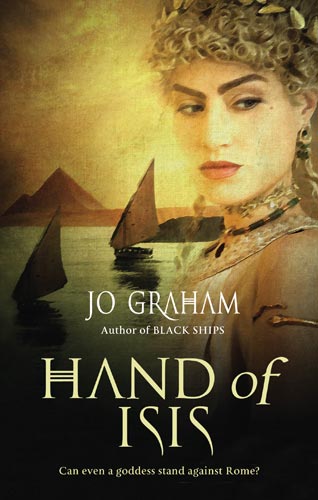
Hand of Isis by Jo Graham
Podcasts! There are a few that you might enjoy if you would like to know more about the eras, countries and lives surrounding these women- The Egyptian History Podcast History of Rome Podcast History of Our World
As always, music provided by Music Alley. Visit them at music.mevio.com
(Closing song: Human After All by Stars and Skylines)
by The History Chicks | Mar 21, 2014 | Biography Episode, Episode, Podcasts
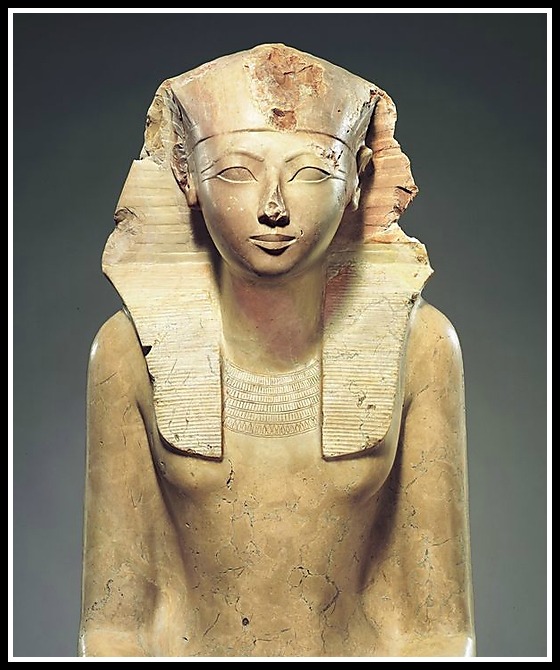
Go back in time. No, farther. Farther! We are talking about a woman who only missed sharing the planet with the last of the woolly mammoths by a couple hundred years. A woman who was born an Egyptian princess, and grew to become a king: Hatshepsut.
We begin this episode with not only a disclaimer that scholars can’t agree on a lot of things that happened back in the days of Pharaohs but of Ancient Egyptian life itself. While people may, essentially, want similar things from life now as then- the culture of the times was a weeee bit different. We don’t go into too deep of an explanation- just the basics to better understand Hatshepsut’s life.

Looking at the waaay past from the present is often confusing. The Great pyramid of Giza, built about a thousand years before Hatshepsut was born, as viewed recently. (Courtesy Tripadvisor)
Born about 1508 BC, Hatshepsut was a daughter of King Thutmose I and Queen Ahmose, he a military man given a royal wife (and likely his half-sister) and the crown of a Pharaoh. Children followed from Ahmose (his Great Wife) and various lesser wives. The boys were raised as potential heirs to the throne, and the girls were raised for their future as queens. As always, we go into a lot more detail on the podcast, but the nickel tour says this: Hatshepsut and her father were close. By all accounts he closely supervised her education and took her places that a typical Queen-in-Training wouldn’t need to know or see, only a future ruler would.
At a young age Hatshepsut was married to her brother (common at the time, don’t freak out- it ensured a royal bloodline and kept out pesky in-laws) Thutmose II. When her father died, she became queen. King Thutmose II was a perfect partner for her because he let her do as much as she wanted. And she wanted. She had a daughter by him, and he had children (with concubines) including Thutmose III (creative with the names, right?). When her husband/brother died this son became king and Hatshepsut his regent.
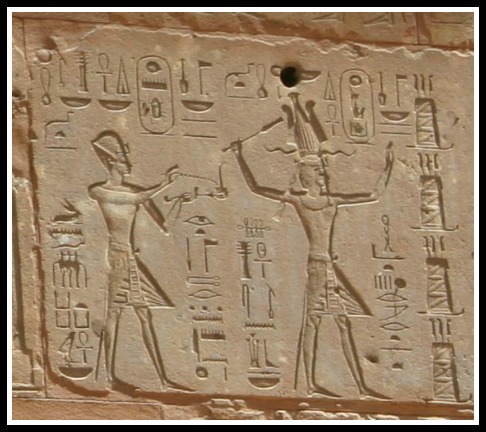
Thutmose III and Hatshepsut- she is the taller figure decked out in Pharaoh garb.
But, ahh, Hatshepsut claimed that her father had said SHE was to be Pharaoh and the god Amun had visited her mother while she was pregnant with Hatshepsut and insisted the same. Hatshepsut, who had been doing the work, took on the uniform. There was precedent for a female Pharaoh, although the couple of times that it had happened before weren’t reigns of great success.

Hatshepsut dressed in Pharaoh-wear.
(Courtesy Metropolitan Museum of Art)
But none had the successes of this one. During her approximately 22 year long reign, Hatshepsut led a very prosperous Egypt to even greater power. Not necessarily by military action, but by diplomacy. She filled the fiscal coffers, engaged in trade with neighboring countries, and set out on expeditions to faraway lands. Her most successful expedition was to the Land of Punt. No one is sure exactly where this fabulous place is now, but the ships had to travel and someone knew the route.
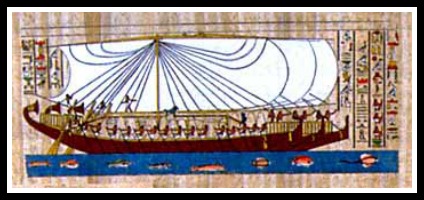
Voyage to Punt
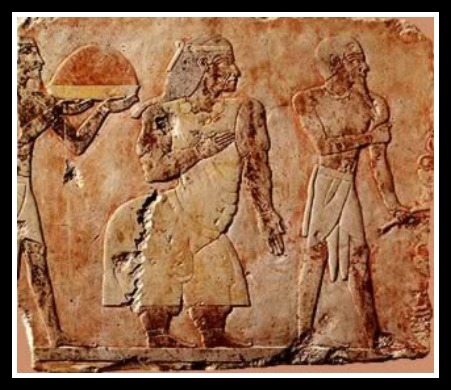
Images depicting those from Punt. Puntians? Puntalicious? Punts?
With her longtime, er, compadre Senemut at her side (he had various roles in her life from servant to advisor to companion) she went on a building bender, including her temple, Djeser-Djseru which is fabulously sleek and contemporary looking even by today’s standards.
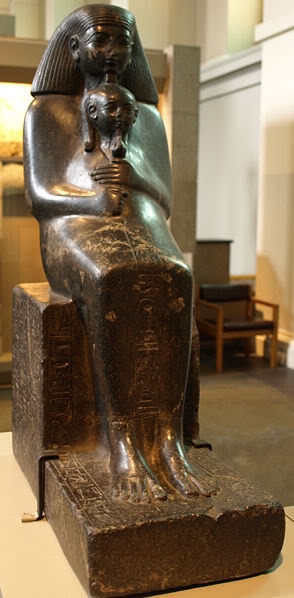
Senenmut and Princess Neferune (on display at the British Museum)
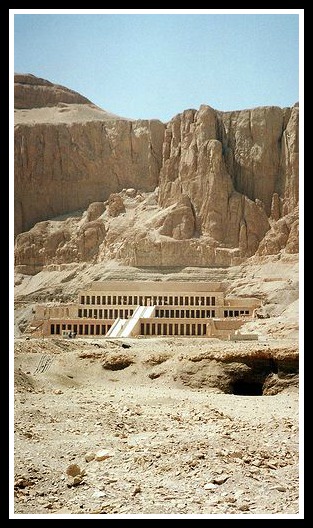
Hatshepsut’s temple
When she died (and oh, do we speculate how that happened) something strange happened to the long list of accomplishments and life led by this remarkable woman: she began to be chiseled out of history. Pharoah Thutmose III (you remember him, the guy who was passed over for the role 22 years ago?) may have been a little miffed at his step-mom. By the time the rest of the world uncovers (literally, it was buried in sand) her life when hieroglyphics on her temple wall can be read, her image has been chipped off of artifacts, her sarcophagus had been moved, and the obelisks that she had erected to commemorate her life are hidden.
Was it an evil plot by men to wipe her out of history because of her gender? Was it mere revenge by Thutmose III who believed that by erasing her memory in this life, she was doomed in the afterlife? Or was he trying to make HIS OWN bloodline appear deeper royal than it was to insure the succession of his son, Amenhotep II to the throne?
Her body wasn’t discovered until the early 2000’s, in Tomb KV60 . Modern technology aided in identifying her.

An x-ray of the mystery mummy who was identified as Hatshepsut because of missing tooth.
Everything that is known about Hatshepsut has been put together like the most difficult of puzzles because a great deal of the information about her reign was destroyed. Even now, Hatshepsut’s legacy is confused with others….

A story of some obelisks: found in Egypt and now residing in New York, London and Paris. Entitled Cleopatra’s Needles, they all pre-date Cleopatra. The pair in NYC and London are the ones Thutmose III erected as copies of Hatshepsut’s great triumphs.
Come back for our next episode where we travel forward in time over 1400 years…and find ourselves still in ancient Egypt.
Time Travel With The History Chicks
We will list any media with the next episode in our series, Cleopatra. But we wanted to leave you with two contemporary media images of Hatshepsut.
Horrible Histories as a whole Awful Egytians series!
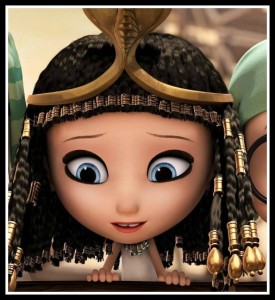
From 2014’s Mr Peabody and Sherman movie, Penny is dressed as Hatshepsut ready to marry King Tut…who wouldn’t be around for another 100 years or so after her death. Don’t get your history from Hollywood, kids.
As always, music comes courtesy of Music Alley. Visit them at music.mevio.com
